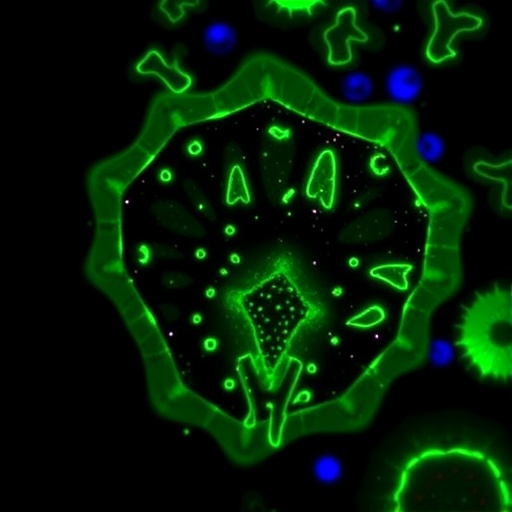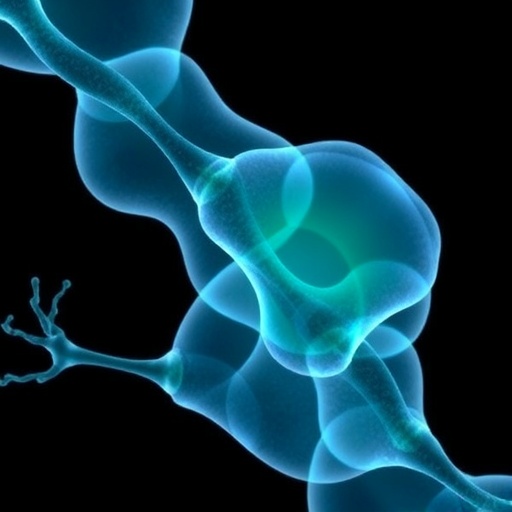
In a groundbreaking advance that holds promise for diabetes treatment, researchers have unveiled the profound regenerative capabilities of a novel compound, THR-123, an agonist targeting the ALK3 receptor within pancreatic tissue. This discovery, featured in the latest issue of Nature Communications, articulates for the first time how activation of ALK3 facilitates in situ regeneration of pancreatic β-cells, potentially rewriting therapeutic approaches for a disease that affects hundreds of millions worldwide.
Pancreatic β-cells serve as the body’s insulin-producing factories, and their loss or dysfunction underpins the pathogenesis of both type 1 and type 2 diabetes. Traditional treatments primarily offer symptomatic relief or exogenous insulin administration, rather than addressing the root cause. The elucidation of a molecular pathway capable of regenerating β-cells in their natural microenvironment is a paradigm-shifting milestone. THR-123’s selective agonism of the ALK3 receptor initiates a cascade of intracellular events that invigorate dormant progenitor cells, nudging them to proliferate and differentiate into fully functional β-cells.
The ALK3 receptor, part of the Bone Morphogenetic Protein (BMP) signaling family, has long been implicated in developmental biology and tissue homeostasis. However, its direct role in adult pancreatic β-cell regeneration remained elusive until now. The research team, led by Álvarez-Cubela and colleagues, applied sophisticated genetic lineage tracing and single-cell transcriptomic analyses to map the dynamic changes induced by THR-123 administration in vivo. Their findings reveal a hitherto unrecognized plasticity within the adult pancreas, countermanding previous assumptions about its regenerative limitations.
.adsslot_VovRWa8PIA{width:728px !important;height:90px !important;}
@media(max-width:1199px){ .adsslot_VovRWa8PIA{width:468px !important;height:60px !important;}
}
@media(max-width:767px){ .adsslot_VovRWa8PIA{width:320px !important;height:50px !important;}
}
ADVERTISEMENT
Mechanistically, THR-123 engagement with ALK3 activates SMAD-dependent signaling pathways that culminate in the transcriptional reprogramming of local progenitor populations. This reprogramming involves upregulation of critical β-cell identity genes like PDX1 and NKX6.1, essential for insulin biosynthesis and secretion. Notably, the study demonstrates that the new β-cells generated through THR-123-mediated stimulation exhibit glucose responsiveness on par with native cells, highlighting the functional relevance of this regeneration.
Further compounding the excitement around this discovery is THR-123’s ability to bypass the immune-mediated destruction seen in type 1 diabetes models. The in situ approach mitigates the risks of ectopic cell transplantation and immune rejection, which have traditionally hampered regenerative therapies. By nurturing endogenous regenerative processes, this small-molecule agonist presents a strategic advantage, offering a safer and more physiological means of restoring β-cell mass.
Apart from its regenerative effects, THR-123 was also investigated for its impact on pancreatic inflammation and fibrosis, common pathological features in diabetic pancreata. The compound was shown to possess anti-fibrotic properties by modulating the pancreatic extracellular matrix composition and reducing pro-inflammatory cytokines. Such multi-faceted therapeutic effects increase the translational potential of ALK3 agonism beyond mere cell replacement.
Preclinical trials conducted on murine models of diabetes demonstrated significant amelioration of hyperglycemia following THR-123 treatment. Glucose tolerance tests showed remarkable improvements, and overall pancreatic architecture appeared preserved, contrasting sharply with progressive degeneration observed in controls. Importantly, long-term safety profiles did not indicate neoplastic transformations or off-target effects, a critical consideration in regenerative medicine.
Beyond diabetes, the implications of modulating ALK3 signaling via THR-123 could potentially extend to other disorders characterized by tissue degeneration and insufficient regenerative capacity. Given that BMP pathways orchestrate cellular homeostasis in diverse organs, this discovery provides a foundational blueprint for future regenerative pharmacotherapies.
The interdisciplinary approach encompassing molecular biology, pharmacology, and bioinformatics underpinned the success of this study. Cutting-edge imaging techniques, coupled with in-depth genomic profiling, allowed the team to trace cellular fate with unprecedented resolution. The integration of these methodologies ensures that the data supporting THR-123’s efficacy are robust, reproducible, and mechanistically sound.
Moreover, this research invites a reevaluation of the plasticity inherent within adult differentiated tissues. For decades, dogma held that endocrine pancreas cells were terminally differentiated and non-replicative. The discovery reported herein challenges that notion, suggesting that targeted signaling interventions can awaken latent regenerative programs, a revelation that could inspire a broad reexamination of cellular identity in other organ systems.
However, despite these promising results, hurdles remain before THR-123 can be translated into clinical practice. Human pancreatic physiology, particularly immune system interactions and microenvironmental cues, may present complexities absent in murine models. Therefore, extensive clinical trials assessing dosing, efficacy, and safety in human subjects are indispensable next steps.
Another layer of complexity lies in the chronic nature of diabetes and the potential requirement for long-term or repeated administrations of ALK3 agonists. The research team acknowledges that sustained therapeutic vigilance will be necessary to monitor for potential adverse outcomes or diminished efficacy over time, emphasizing the need for comprehensive pharmacokinetic and pharmacodynamic evaluations.
From a commercial perspective, the development of THR-123 as an orally bioavailable small molecule adds an attractive dimension. Oral therapies have distinct clinical advantages over injectable or cell-based treatments, particularly in terms of patient adherence and healthcare resource optimization. If successfully developed, THR-123 could transform the therapeutic landscape for millions living with diabetes.
Simultaneously, this study has sparked considerable excitement and speculation within the scientific community. Experts predict that this discovery will catalyze a wave of research focused on BMP pathway modulation and endogenous tissue regeneration. It also invites collaboration across academia, industry, and clinical centers to accelerate translation.
In closing, the work by Álvarez-Cubela et al. represents a tour de force in regenerative medicine, coupling deep molecular insights with translational potential. The ALK3 agonist THR-123 emerges as a beacon of hope, not only for restoring pancreatic β-cell populations but also as a potential template for regeneration-oriented therapeutics across a spectrum of diseases. As we stand on the cusp of this new era, the promise of harnessing the body’s innate regenerative capacity through targeted pharmacology heralds a future where chronic diseases like diabetes may be managed, or even cured, at their roots.
Subject of Research: Pancreatic β-cell regeneration via ALK3 receptor activation
Article Title: Pancreatic β-cell regeneration in situ by the ALK3 agonist THR-123
Article References:
Álvarez-Cubela, S., Altilio, I.D., Doke, M. et al. Pancreatic β-cell regeneration in situ by the ALK3 agonist THR-123. Nat Commun 16, 6121 (2025). https://doi.org/10.1038/s41467-025-61534-2
Image Credits: AI Generated
Tags: ALK3 receptor agonistBone Morphogenetic Protein signalingcellular regeneration mechanismsinsulin-producing β-cellsmolecular pathways in diabetesNature Communications studynovel diabetes treatmentsprogenitor cell differentiationtherapeutic approaches for diabetesTHR-123 pancreatic regenerationtype 1 type 2 diabetes researchβ-cell regeneration diabetes





